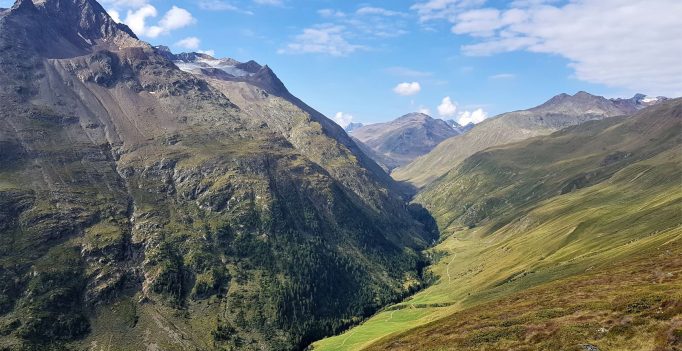Reduced snow cover and vegetation shifts in the Alps, driven, to some degree, by climate change, are leading some mountain ecosystems to struggle to hold onto nutrients that feed vegetation, a new study shows.
The study, published in the journal Global Change Biology last month, shows that alpine ecosystems may have trouble retaining vital elements like nitrogen that are necessary for maintaining plant growth and biodiversity.
“It’s really added to the literature, arguing that it’s really important to understand the interaction among the different elements of an ecosystem and what the effects of climate change will be,” Olivier Dangles, author of the 2023 book Climate Change on Mountains, said of the study.
The warming of alpine grasslands, which is occurring at double the global average rate, is causing significant disruptions in the ecosystem functions of plants and soils. This accelerated warming is leading to significant decreases in snow cover and promoting the swift upward migration of small shrubs like heather.
The cycle of nitrogen between plants and soil microbes across seasons is vital for retention of the element in alpine ecosystems.
“The seasonal aspect is really important in these mountains, and climate change can really disrupt those seasonal processes,” said Arthur Broadbent, a researcher at the University of Manchester and the lead author of the study. “That can throw the ecosystem a little bit out of whack, and potentially lead to not being able to retain crucial nutrients like nitrogen as well as it could before.”
To better understand how reduced snow cover and shrubs impact plant nitrogen intake, the team of researchers conducted a snow manipulation and shrub expansion experiment in an alpine grassland area in the Oetztal Alps in Tyrol, Austria.

Shrubs increased in abundance at the site from 2003 to 2015, and also shifted upward to higher elevations, likely in response to climate change. Warming temperatures drive mountain species higher as they attempt to remain in their comfort zone. The researchers manipulated the snow, manually removing it from 16 plots three times.
To understand the seasonal dynamics of the test site, the researchers sampled soil at four key seasonal timepoints for alpine ecosystems: in May after snow melt, when alpine plants start to grow and obtain a large amount of their annual supply of nitrogen; in July at peak plant growth; in September when plants start to deteriorate in falling temperatures; and in February at mid-snow season.
The effects in spring, specifically the period after snow melt, and in autumn, at the time of plant deterioration, were particularly pronounced as reduced snow cover and shrub expansion disrupted the seasonal coupling of plant and soil nitrogen cycling. In spring, there was a 70 percent decrease in uptake of nitrogen by plants. In autumn, there was an 82 percent decrease.
“People know all about flowering times of plants and the emergence of pollinators and how there has to be a close match between the emergence of the pollinator that pollinates a particular plant and when it flowers,” Broadbent said. “People might not be so aware that that also exists with plants and soil and that there’s these really important transitions between plant growth and soil microbes.”
This story is funded by readers like you.
Our nonprofit newsroom provides award-winning climate coverage free of charge and advertising. We rely on donations from readers like you to keep going. Please donate now to support our work.
During alpine winters, snow functions as a protective blanket, enabling soil microbes to accumulate nutrients in their biomass, which also helps plants to survive the harsh winter environment. With a constant layer of snow providing insulation at a steady temperature, both plants and microorganisms can remain dormant, protected from extreme temperature fluctuations in the Alps.
However, research shows that climate change could lead to an 80 to 90 percent reduction in snow cover in certain parts of the Alps by the end of the century.
During winter days in alpine ecosystems, blankets of snow insulate the ground and reflect sunlight and heat away from the land. Without the snow cover, the ground warms, leading to what Broadbent refers to as a ‘false spring,’ during which plants emerge from their dormancy. However, as night falls, the temperature plummets back to sub-zero levels. This sudden drop can be detrimental to both plants and microorganisms.
“This snow is also a reservoir. So something we may want to look into more in the future is what happens if this water reservoir disappears, and that water storage disappears,” Michael Bhan, head of the Innsbruck Doctoral College (IDC) of Alpine Biology and Global Change and a contributing author to the study, said.









